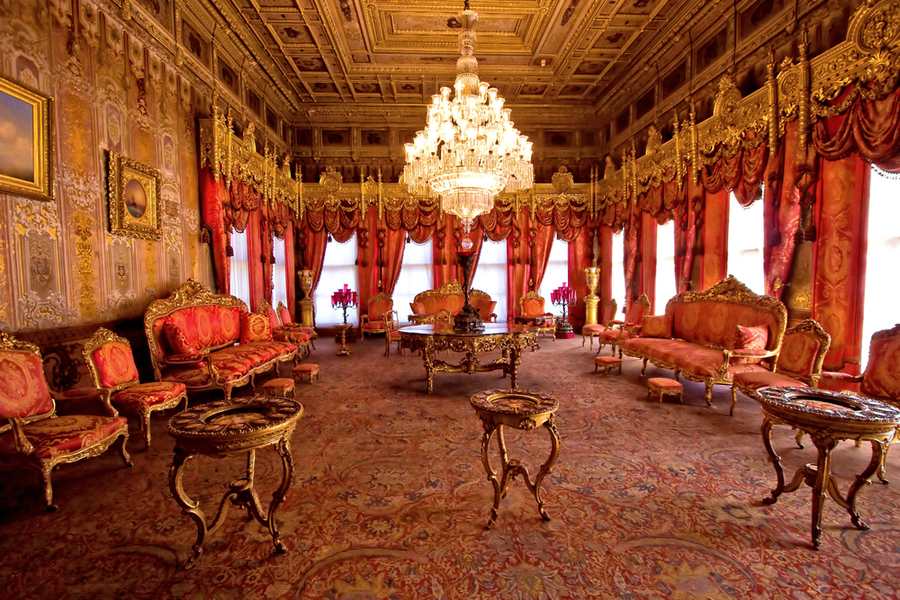Hereke Rug Ottoman, Hereke is a town in Kocaeli province, Turkey. This city is famous for the Hereke rug and its Oriental rug industry at the northern edge of Izmit Bay, near Istanbul. Hereke rug is the most famous rug in Turkey. The city is quite famous for its rug weaving tradition and workshops. This rug is one of the finest hand-knotted rugs in the world. The most fierce rival for Hereke would probably be the Iranian city of Qum.
The Ottoman Emperor, Sultan Abdulmecid, established the Hereke Imperial Factory in 1843. The purpose was to produce rugs for the Ottoman Court, mainly for Dolmabahçe Palace, in Istanbul.
This factory managed to produce over 140 large rugs and 115 prayer rugs. The nobles of the Ottoman Empire were the other customers of the Hereke rug. In the 20th century, this rug found its way to Western markets. Today, many exquisite examples of them are in western palaces and museums. The Hereke rug in the Ambassador’s Hall in Dolmabahçe Palace is about 120m² large.

Technical Aspects And The Structure Of Hereke rug
Hereke rug weaver started their job by copying chiefly the Persian court rugs with curvilinear designs. Early Hereke rugs had asymmetric (Persian) knots at densities reaching 800 per square inch. The Hereke rug weavers would also use symmetric (Turkic) knots but far less than the Persian knot.
In the royal rug workshops, rug weavers applied all techniques. That included lavish ones such as metal brocade which increased rapidly in Hereke during the early 20th century.
Hereke rug weaver would use silk from Bursa. The reputation of Bursa silk dates back to before the fall of Constantinople. The knot count of the silken Hereke rugs is about 645 per square inch. Hereke wool rugs have an average knot density of about 230 Turkic knots per square inch on a cotton foundation.


Dyeing And Painting of Hereke Rug
Dyes must be the best in Hereke to match high-grade silk and wool. Dark blue, red, cinnamon, and ivory are dominant colors in hereke rug workshops. Secondary colors have a significant role in intricate designs preferred in hereke. These include a wide range of hues possible on a natural palette. Hereke Rug Ottoman.

Designs And Patterns of Hereke Rugs
Court weaving tradition and finely knotting make Hereke weavers able to weave almost everything. Both curvilinear and rectilinear designs are the products of Hereke.
At first, the Hereke weavers copied traditional Persian designs like the 16th-century royal rugs of Isfahan, Kashan. The cities where Safavid royal rug workshops produced silken rugs for Persian, Indian, and Ottoman Palaces. For prayer rugs, Mameluke Egyptian designs were copied at first and Gördes designs.
Prayer rugs are the most popular type of rugs in Anatolia. Traditional Anatolian designs found their elaborate versions in Hereke during the last century. All Hereke rugs have inscriptions, early examples in Perso-Arabic script and 20th-century ones in Latin.


In case you’re interested in this luxurious royal rug, head over to our Online Store now and check out the exquisite Hereke rugs in our Louisville, KY Rug Store!

